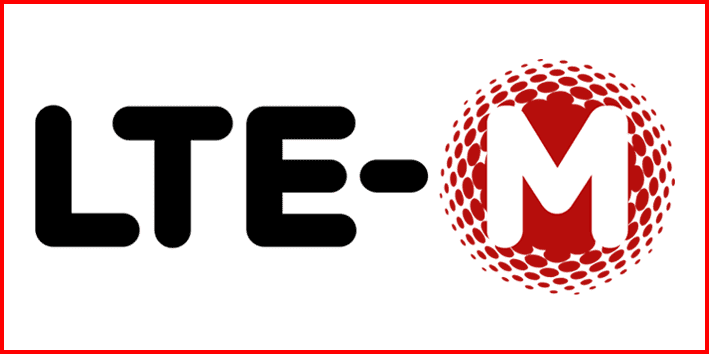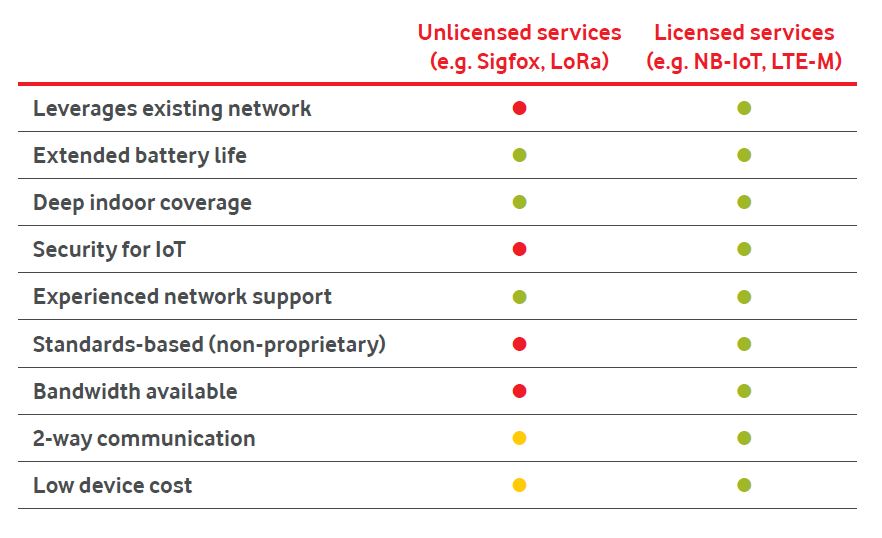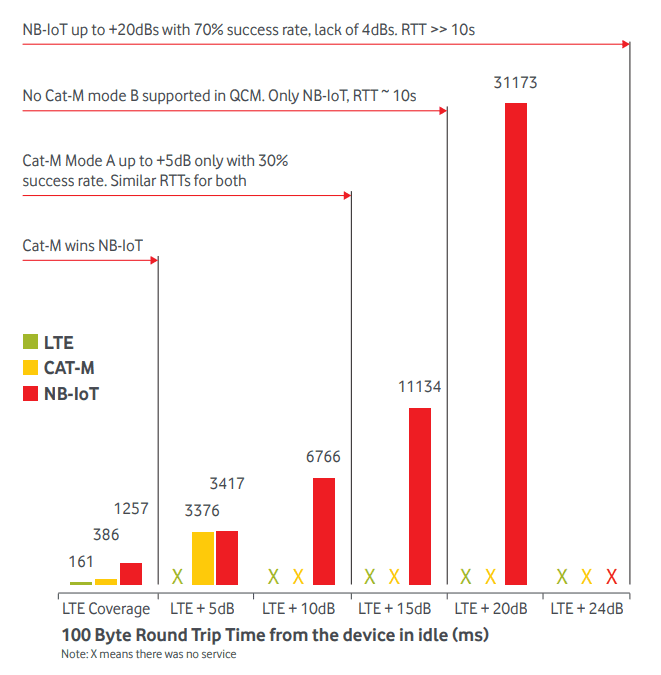NB-IoT and LTE-M Overview
Narrowband IoT and LTE Machine Type Communications
Narrowband IoT (NB-IoT) and LTE Machine Type Communications (LTE-M)—these are Low Power Wide Area technologies (LPWA) which utilises the radio access network for connecting devices with low bandwidth requirements whilst providing increased penetration with the added capability of using low power. The 3GPP released information concerning LTE-M and NB-IoT for Rel.13 in June 2016, known as CAT NB and CAT M or rather Category Narrowband and Category Machine Type respectively.


Comparison
Narrowband IoT (NB-IoT) and LTE Machine Type Communications

There are multilple LPWA technologies but only NBIoT, LTE-M and EC-GSM use licenced spectrum, tailored with the security provided by MNOs this give users an added layer of service assurance.
The benefits of using the licensed vs unlicensed services can be seen as trade off of security vs quick installation process.

Technical comparison — There are various differences between NB-IoT and LTE-M for example the carrier bandwidth, throughput and coverage.

One of the main features concerning LPWA technologies is the enhanced coverage capability; for LTE-M the Maximum Coupling Loss (MCL) has an additional gain of approximately 10dB and 20dB for NB-IoT when compared to GSM.
This is achieved by a few factors:
- Repetition of transmissions
- New control channels (usage of Non Access Stratum)
- Size of UE bandwidth

For other field tests that were carried out for data delivery times and battery life, the results are shown here.


Features
Narrowband IoT (NB-IoT) and LTE Machine Type Communications
New timers have been introduced to optimise the performance of IoT devices utilising these LPWA technologies. Two of these are Power Save Mode (PSM) and extended Discontinuous Reception (eDRX); released in 3GPP Rel12 and Rel13 respectively.
In PSM the UE would maintain its pdp context (packet data protocol), also known an PDN (packet data networks) connection, with the EPC (Evolved Packet Core), but its radio or antenna would be powered down. This leads to a difficulty in paging the IoT device to receive MT (mobile terminated) traffic, leading to loss of packets as a local Serving Gateway (SGW)
would only keep packets for previously configured amount of time in its queue before these packets get discarded. So why use PSM? The benefits are based on the fact that an IoT device would be using less power as it is in a power saving state (PSS) and this increases the longevity of an IoT device powered by a DC battery.

Example of implementation of PSM
To address the loss of packets, eDRX was introduced. This allowed for more successful delivery attempts of MT traffic while providing support for MO (mobile originated) traffic. When a device utilises eDRX, it allows the device to be paged while it is in idle state utilising a paging transmission window (PTW) to allow for a paging occasion (PO).

Example of implementation of eDRX
Both of these features can be configured so that an IoT device can use them concurrently, giving the device opportunities to be paged in the idle state as well as using the PSS to conserve energy.

Example of implementation of concurrent eDRX and PSM
Usage of PSM and eDRX is optional for both NB-IoT and LTE-M. However, research shows that by using these modes in combination can extend the battery life of a IoT device with ranges of up to 10 years for LTE-M and 15 years for NB IoT. This has been enabled by the extended sleep cycles eliminating the unnecessary radio channel activation offered by PSM and longer interval cycle between the paging time windows for eDRX.

Device Ecosystem — The device architecture for LPWA devices does not differ much from the architecture of cellular devices. As an example, the following images outline the main elements of a typical smart meter. In the near term it will be possible to design host-less (app environment inside the chip – no external A-CPU required) for LPWA devices which allows more efficient (space usage, power consumption) hardware designs.

Use Cases — LPWA networks allow a wide range of opportunities, the evolved spectrum has introduced some new capabilities which allows a range of requirements to be addressed.

Some of the opportunities which LPWA enable.
Summary
NB-IoT and LTE-M have evolved as technologies which enable the connectivity of a range of devices, using the low power consumption capability with increased coverage footprint. It is obvious that for deeper coverage, whether underground or in a remote region far from any cellular site, NB-IoT outperforms LTE-M by ranges of approximately 10dB.
Also with NB-IoT, a device has a much longer battery life with around 15 years, while LTE-M is around 10 years. This longer battery life offered by NB-IoT reduces the number of maintenance inspections that such IoT devices would require, allowing for operational savings on expenses.
The modules that offer NB-IoT are generally cheaper and with costs of around half the price in most instances.
Currently NB-IoT has a larger global footprint than LTE-M, this can be attributed to the fact that where there are still 2G and LTE networks this in some ways reduces the need for LTE-M, whereas NB-IoT with itsm enhanced coverage capability provides a capability that these network technologies are not able to mimic.

Stay Up to Date With The Latest News & Updates
Join Our Newsletter
Join our monthly newsletter for the latest updates in the electronics industry

Have a IoT Project in Mind?
GLYN is your expert partner and will give you all the advice you need for selection, development and mass production. You don’t just purchase a product from Glyn. Our experienced technical staff, that is highly competent in finding solutions, are also at your disposal. In times of continually increasing complexity in the electronic sector, this service will ensure quick and easy success for your projects.
